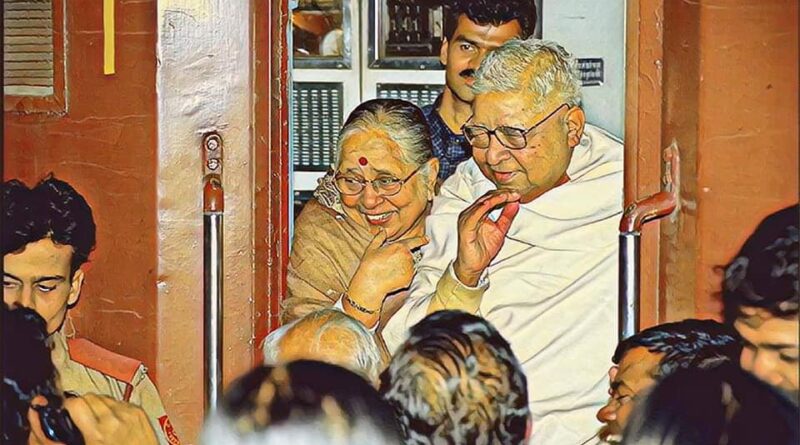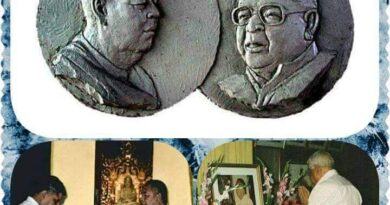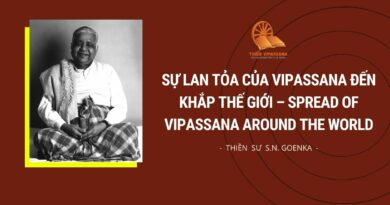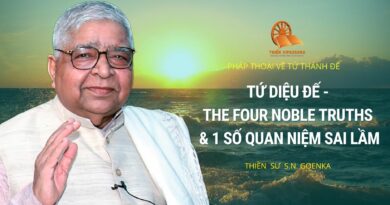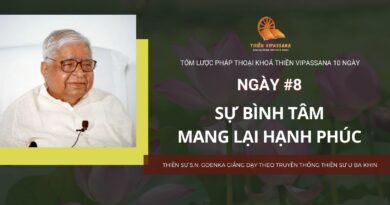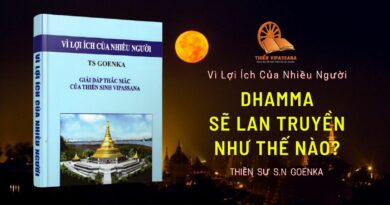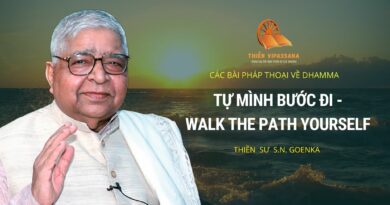Vignettes from Mataji’s Life: Mataji – An Ideal Companion for a Great Man
The year was 1942 and the occasion was a wedding in a Hindu Marwari community who take their customs rather seriously and formally, especially those that have to do with the sanctity of weddings.
The groom-to-be made a demand which took the bride’s family by complete surprise. What was it? Did the groom ask for a heavy dowry – a car or jewellery?
On the contrary, the groom’s firm demand was that the bride’s face should not be covered by a veil when she came to the wedding podium, a serious departure from tradition in those days, or else he would not enter the wedding podium.
Those were the days when a bride would be completely covered in wedding finery, and not just her face, not even a nail could be seen. To bring her out in public without a veil was unheard of.
But seeing the determined stand of the groom, the bride’s family gave in and the wedding of Shri Satyanarayan Goenka and Shrimati Illaichidevi was solemnized. Born on 3rd February, 1930, (Magha Shukla 5th, the fifth day of spring) in Mandalay, Illaichidevi was 6 years younger than her groom.
Prior to the British Empire, Mandalay was the capital of King Mindon Min’s kingdom. Mataji’s maternal home happened to be near Goenkaji’s residence and the two families had cordial relations and were supportive of each other. She was married at the tender age of 12 years. In accordance with the customs of those days, after the engagement she had to discontinue her studies and was withdrawn from school.
It was a matter of great regret for Goenkaji that his father, without asking for his approval, chose an uneducated bride for him. Goenkaji who was studious by temperament and very fond of books was deeply influenced by Swami Dayanand Saraswati (Founder of Arya Samaj – a reformist Hindu Movement) and never wanted to get married before 25 years of age. But he had to buckle under pressure from the family elders and was married when he was 18 years old. He complained to his two elder brothers whom he had close friendships with, but there was no way out.
In such situations, normally the target of frustrated anger would be the wife. But not with Goenkaji. He knew that his wife was not to be blamed, rather it was the social customs prevalent in those days which had pushed women behind veils, and away from education. But a resolute Goenkaji wanted to educate his child bride. He did not have sufficient time to personally tutor his wife within the formal atmosphere of the family, so he took help from the educated wife of his friend and family doctor Om Prakash. His cousin Chouthmal’s wife who was educated, also supported this endeavour. Both women came and started teaching the womenfolk of the Goenka family. Gradually a tiny school of about 15 – 20 girls and women took shape at home.
Illaichidevi not only received an education, but she also touched the depths of Vipassana sadhana along with her husband. And when Goenkaji came to India and started teaching Vipassana, she soon joined him, walking with him every step of the way. In Vipassana camps and public programmes, she was there next to him. Whether it was checking time of women meditators during camps, question and answer time, looking after centres, discourse time or in giving guidance to a meditator, Illaichidevi’s presence was ever there with Goenkaji, like a shadow. The occasions that she was not present due to family or some such matter, were few and far between.
When I got an opportunity to meet her, I asked, did you two ever fight?
No, she said. He was always very serious by temperament. Others could not approach him in a flippant manner. The atmosphere at home would turn serious as soon as he entered the house. Everyone was somewhat afraid of him. But he never used abusive language or fought with anyone. Of course, he would get angry and shout, but after practising Vipassana sadhana, he stopped shouting. He would express his displeasure in a sentence or two. Aggression was gone.
When I asked her if she had any particular interest, she answered that she enjoyed stitching and knitting cardigans. She made many hand held fans with new creative designs. But with the advent of electric fans, this occupation ended.
Mataji did not speak much but she touched heights in sadhana. With her generous, refined demeanour and calm poise, she was well liked amongst her extended family members who praised her generously. Dedicated, straightforward, simple and immersed in sadhana, Illaichidevi walked every step of the way with her husband and made the phrase co-traveller on path of Dhamma a reality.
——————————–
Nguồn: Paresh Gujarathi facebook
Link: https://www.facebook.com/GUJARATHI/posts/3694841267226201

